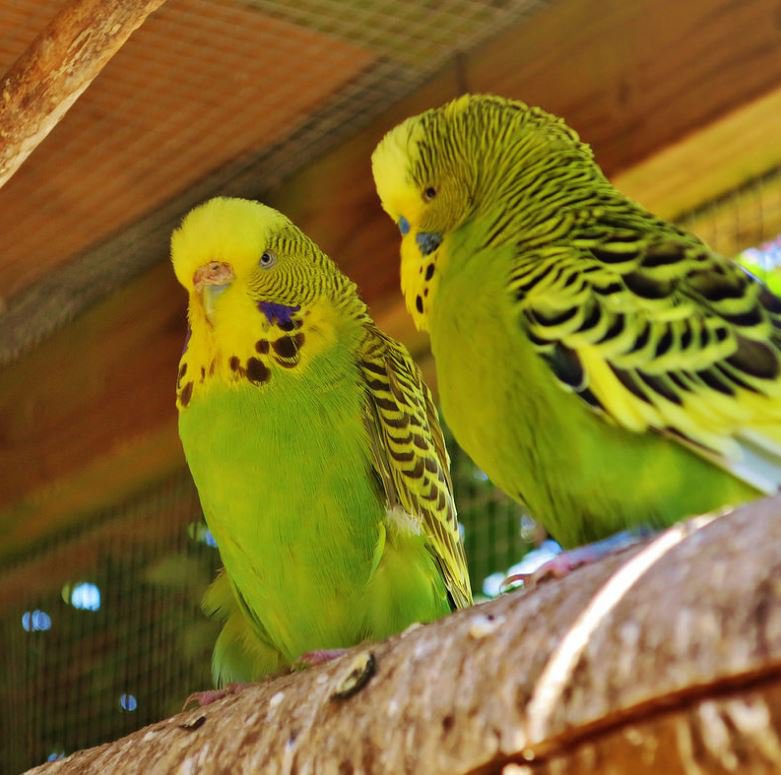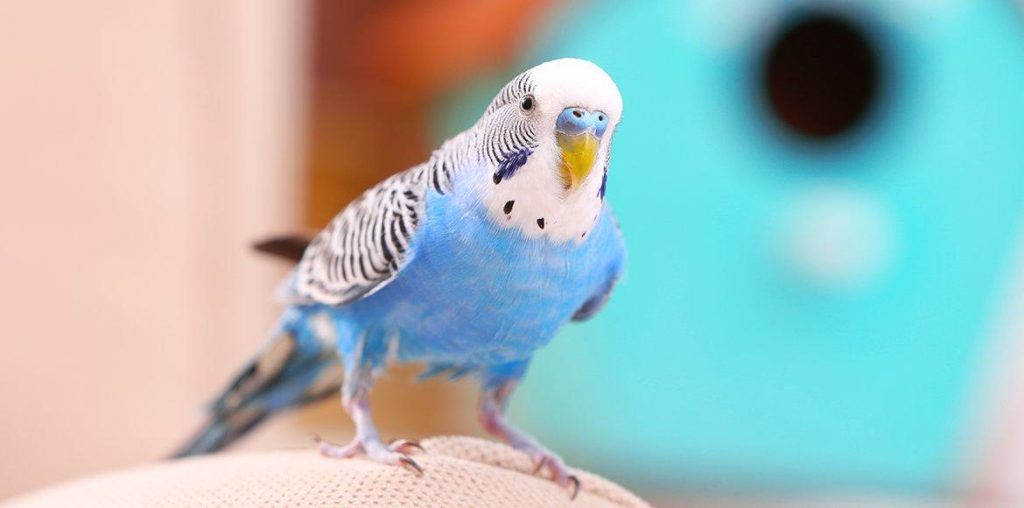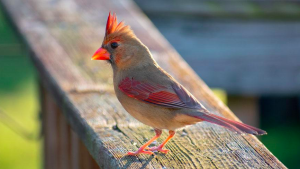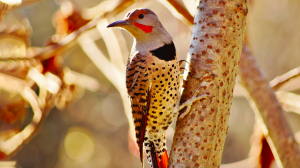The Budgerigars: Everything You Need to Know About These Adorable Parakeets

The Budgerigars
Suppose you’re looking for a small, intelligent, friendly pet bird. In that case, consider getting a budgerigar, a budgie, or a parakeet. These delightful little creatures make great pets and have a lot of personality. In this article, we’ll cover everything you need to know about the budgerigars, from their history and biology to their care and training.
History of The Budgerigars
Budgerigars, also known as budgies or parakeets, own a long and fascinating history. These small, brightly colored birds are native to Australia and have lived in the wild for thousands of years.

Europeans’ first recorded sighting of a budgerigar was in 1770 when Captain Cook’s crew observed them during their explorations of Australia. However, in the early 1800s, the budgerigars began to be kept as pets in Europe.
The first captive breeding of budgerigars is believed to have occurred in England in the 1850s. These birds were initially quite rare and expensive. Still, their popularity increased in the late 1800s as more people began to keep them as pets.
In the early 1900s, breeders began experimenting with different color variations of the budgerigars, leading to a wide range of color mutations. These include colors such as albino, lutino, pied, and spangle, which are now common in pet stores worldwide.
During the 20th century, the budgerigars became one of the most popular pet birds in the world. They are now widely bred and kept as pets in many countries, including the United States, the United Kingdom, Australia, and Japan.
Physical Characteristics of Budgerigars
The Budgerigars are small, slender birds that typically measure 7-8 inches from the tip of their beak to the end of their tail. They have a distinctive and colorful appearance, with bright green and yellow feathers on their head and body, black markings on their wings, and blue feathers on their tail.
One of the budgerigars’ most notable physical characteristics is their hooked beak, which is used for cracking open seeds and other foods. Their beak is sharp and powerful, allowing them to easily break through tough outer shells to access the nutritious contents.
Budgerigars also have small, round nostrils on either side of their beak. These nostrils are covered by a fleshy, waxy substance called the cere, which varies in color depending on the bird’s gender and age.
Another important physical characteristic of budgerigars is their wings, which are long and narrow, and enable them to fly with great agility and speed. Their feet are also adapted for perching, with two toes pointing forward and two pointing backward, which helps them to grip onto branches and other surfaces.
In size and weight, male and female budgerigars are typically similar, with males often having slightly larger heads and beaks. Adult budgerigars generally weigh between 30-40 grams, with males sometimes being heavier than females.
Behavioral Characteristics of Budgerigars
Budgerigars are highly social and intelligent birds that display many exciting behaviors. As a species, they are famous for their playful and curious nature and ability to form strong bonds with their human owners.
One of the budgerigars’ most notable behavioral characteristics is their ability to mimic sounds and speech. In the wild, the budgerigars use a variety of vocalizations to communicate with each other, including chirps, whistles, and trills. When kept as pets, they have been known to mimic the sounds of human speech, often to the delight of their owners.
The Budgerigars are also active birds that enjoy playing, exploring, and exercising. They love to climb, swing, and play with toys and require plenty of space and stimulation to remain healthy and happy. In the wild, they spend much time flying and foraging for food. Pet budgerigars should have plenty of opportunities to engage in similar activities.
Regarding social behavior, the budgerigars are highly social and often form close bonds with other birds or their human owners. They communicate through various body languages cues, such as head bobs, fluffed feathers, and wing flapping. They also engage in preening and grooming behaviors, which help to strengthen social bonds and maintain good hygiene.
One of the most fascinating aspects of the budgerigar behavior is their ability to solve problems and use tools. In laboratory settings, they have been observed using sticks and other objects to retrieve food from hard-to-reach places, demonstrating a problem-solving ability that was once considered unique to primates.
Diet and Nutrition for The Budgerigars
Budgerigars are seed-eating birds that require a well-balanced diet to maintain good health and vitality. In the wild, they graze on a type of grass seeds, as well as occasional insects and other small invertebrates.
For petting the budgerigars, it is essential to provide a diet that mimics their natural food sources as closely as possible. A high-quality commercial seed mix explicitly formulated for budgerigars is an excellent place to start. These mixes typically include a variety of seeds, such as millet, canary seed, and sunflower seeds, which provide essential nutrients and minerals.
Supplying fresh fruits and vegetables as part of a budgerigar’s diet is also essential. Good options include lush greens like spinach and kale and fruits like apples, grapes, and berries. These foods provide additional vitamins and minerals that may not be present in seed mixes alone.
Housing and Environment for Budgerigars
The Budgerigars need a spacious and stimulating environment to thrive. They should have a cage at least 18 inches wide, 18 inches deep, and 24 inches high, with plenty of perches and toys for exercise and play. The cell should also be placed in a warm, draft-free area, away from direct sunlight and other pets.

The essential points to Housing:
- Budgerigars require a spacious and stimulating environment to thrive.
- The cage or aviary should be appropriately sized based on the number of birds.
- A single budgerigar should have a cage at least 18 inches long, 18 inches wide, and 18 inches tall.
- The cell should be at least 24 inches long, 18 inches wide, and 18 inches tall for a pair of budgerigars.
- The enclosure should have perches of varying sizes and textures, toys, and other stimulating objects.
- Swings, ladders, and mirrors are popular choices for Budgerigar toys.
- The ideal temperature range for the budgerigars is between 65 and 85 degrees Fahrenheit.
- Proximate humidity should be between 40 and 60 percent.
- Budgerigars are sensitive to changes in temperature and humidity, so maintaining a consistent environment is essential.
- The cage should be preserved away from drafts and direct sunlight.
- Budgerigars require daily exercise and socialization outside of their enclosure.
- A play gym or other designated training and interaction areas can prevent boredom and encourage healthy physical activity.
Health and Disease of Budgerigars
The Budgerigars are generally hardy birds but can be susceptible to various health problems, including respiratory infections, feather plucking, and egg-binding in female birds. Regular veterinary checkups and proper nutrition and Housing can help prevent many of these issues. Suppose you notice any signs of illness, such as lethargy, loss of appetite, or labored breathing. In that case, taking your bird to a vet is essential as soon as possible.
Grooming and Maintenance for Budgerigars
Budgerigars require regular grooming to stay healthy and comfortable. It includes trimming their wings and nails and cleaning their feathers and beaks. Regular baths or showers can also help keep their feathers in good condition. It’s essential to provide your budgerigar with plenty of toys and activities to keep them entertained and stimulated and to clean their cage and toys regularly to stop the buildup of bacteria and parasites.

- Budgerigars require regular grooming and maintenance to stay healthy and happy.
- Feather maintenance is essential, and budgerigars should be provided with a bird bath or spray bottle filled with clean water to clean themselves and relieve itching.
- Regular nail trimming is necessary to prevent overgrowth, which can cause discomfort and difficulty perching.
- Beak maintenance is also essential, and providing a variety of toys and objects to chew on can help to keep the beak trimmed and healthy.
- Cage or aviary cleaning and disinfection are essential to prevent the buildup of harmful bacteria and organisms.
- Regular cleaning of perches, toys, and feeding dishes can help prevent illness and promote good health.
- It is crucial to pursue professional help from an experienced avian veterinarian or pet groomer for nail trimming and beak maintenance to avoid injury to the bird.
Training and Bonding with Budgerigars
The Budgerigars are intelligent birds that can be trained to do a wide range of tricks and behaviors. Using treats and praise, positive reinforcement training is the most effective way to train budgerigars. With tolerance and consistency, you can teach your budgerigar to step up onto your hand, fly to you on command, and perform simple tricks like playing dead or retrieving objects. Building a strong bond with your budgerigar through training and socialization is critical to ensuring their happiness and well-being.
Common Questions About Budgerigars
- How long do budgerigars live? Budgerigars can live up to 15 years in captivity with proper care.
- Do budgerigars need a mate to be happy? While budgerigars are social birds, they don’t necessarily need a mate to be happy. They can create strong bonds with their owners and with other birds.
- Can budgerigars learn to talk? Yes, budgerigars are known for mimicking human speech and various sounds.
- How do I know if my budgerigar is sick? Signs of illness in budgerigars can include lethargy, loss of appetite, labored breathing, and unusual behaviors or posture.
- Are budgerigars good pets for children? Budgerigars can make great pets for children, but it’s important to supervise interactions and teach children how to handle and care for them properly.
What is the lifespan of a budgerigar?
The lifespan of a budgerigar is influenced by various factors that can affect their overall health and well-being. These factors include diet, exercise, genetics, and environmental conditions. Generally, a budgerigar’s lifespan can vary from 5 to 10 years in captivity. Still, some budgies have been known to live much longer with proper care.
Diet is a significant factor in a budgerigar’s lifespan. These birds require a well-balanced diet of fresh fruits and vegetables, high-quality pellets, and a small amount of seed. A diet that is high in the basis can lead to health problems such as obesity, liver disease, and malnutrition, which can shorten a bird’s lifespan.
Exercise is also essential for a budgerigar’s health and longevity. These birds are naturally active and require ample space to move around and fly. A lack of activity can direct to obesity and other health issues that shorten a bird’s lifespan. Owners should provide their budgerigars with plenty of toys and opportunities for training and mental stimulation to keep them healthy and happy.
Genetics can also play a part in a budgerigar’s lifespan. Some birds may be more prone to certain health conditions due to their genetic makeup. For example, some budgerigars may be more likely to develop tumors or other health issues that can shorten their lifespan.
Environmental conditions can also impact a budgerigar’s lifespan. These birds require a clean and safe environment free from harmful chemicals and potential hazards. Exposure to toxins or unsafe living conditions can lead to health problems that shorten a bird’s lifespan.
Overall, the lifespan of a budgerigar can vary depending on various factors such as diet, exercise, genetics, and environmental conditions. Providing these birds with proper care, a balanced diet, plenty of exercise, and a safe living environment can help ensure they live long and happy lives. Regular checkups with an avian veterinarian are also essential to catch any potential health issues early and ensure that your budgie stays healthy for years.
Conclusion
The Budgerigars are charming and intelligent birds that make excellent pets for people of all ages. With proper care and training, these little parakeets can bring your life years of joy and companionship. Remember to provide your budgerigar with a nutritious diet, a stimulating environment, and plenty of socialization and training. With love and attention, your budgerigar will thrive and become an integral part of your family.







